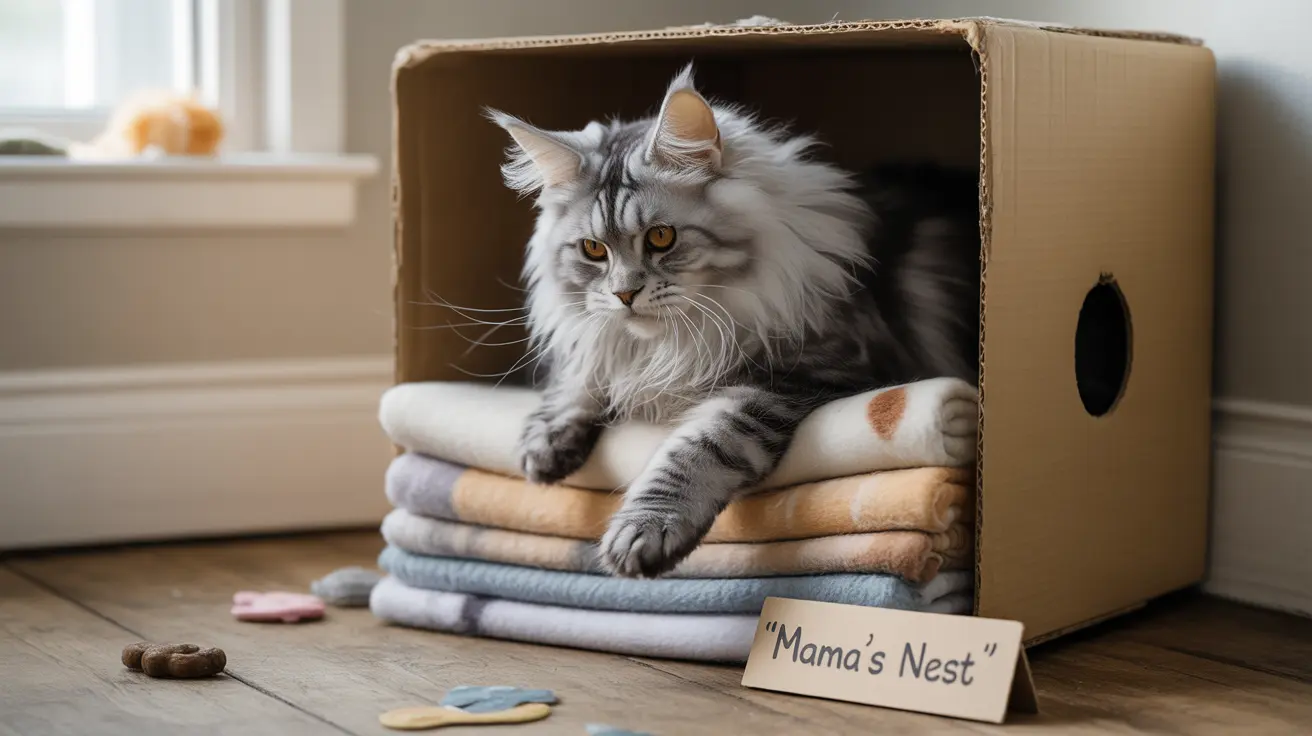Recognizing when your cat is going into labor is crucial for ensuring a safe and successful delivery. As an expectant cat parent, understanding the signs of impending labor can help you provide the best support for your pregnant cat during this critical time.
In this comprehensive guide, we'll explore the key behavioral and physical indicators that signal your cat is preparing to give birth, helping you identify when labor is approaching and how to respond appropriately.
Early Warning Signs of Labor
In the days leading up to labor, your cat will exhibit several telltale signs that birth is approaching. Most cats begin showing these indicators about a week before delivery:
Temperature Changes
A significant drop in body temperature is one of the most reliable signs of imminent labor. Your cat's temperature will typically fall below 100°F (37.8°C), indicating that kittens will likely arrive within 24 hours.
Nesting Behavior
Your cat will actively seek out quiet, secluded spaces to prepare for birth. She may display increased interest in closets, boxes, or isolated corners, often arranging blankets or bedding materials to create a comfortable birthing space.
Physical Changes During Pre-Labor
Changes in Appetite
Most cats experience a noticeable decrease in appetite 24-48 hours before labor begins. This is normal and shouldn't cause concern unless accompanied by other concerning symptoms.
Mammary Development
The mammary glands will become more pronounced, and you may notice milk production beginning. The nipples often appear pinker and more prominent as labor approaches.
Behavioral Signs of Active Labor
When your cat enters active labor, you'll notice several distinct behavioral changes:
- Increased vocalization and restlessness
- Frequent licking of the genital area
- Panting or heavy breathing
- Visible contractions
- Intense focus on the nesting area
Stages of Labor and Delivery
First Stage
Early labor typically lasts 6-12 hours, characterized by:
- Mild contractions
- Occasional vocalizations
- Restless behavior
- Clear or slightly bloody discharge
Second Stage
Active labor involves:
- Strong, visible contractions
- Delivery of kittens (usually 10-60 minutes apart)
- Passage of placentas
- More intense vocalizations
When to Contact Your Veterinarian
While most cats deliver successfully without intervention, certain signs warrant immediate veterinary attention:
- Strong contractions for over 30 minutes without producing a kitten
- Excessive bleeding or green discharge before any kittens are born
- Extreme distress or continuous crying
- Labor lasting more than 24 hours
- More than 2 hours between kittens during active labor
Post-Labor Care
After delivery, monitor your cat for normal recovery signs:
- Regular nursing of kittens
- Normal appetite returning within 24 hours
- Proper cleaning of kittens and the nesting area
- Normal, small amounts of discharge
Frequently Asked Questions
What are the early signs my cat is about to go into labor?
The earliest signs include a drop in body temperature, decreased appetite, nesting behavior, and enlarged mammary glands. These typically appear 24-48 hours before active labor begins.
How can I tell if my cat is in active labor and ready to deliver kittens?
Active labor is indicated by strong contractions, intense vocalizations, panting, and visible straining. Your cat may frequently lick her genital area and show clear signs of discomfort.
When should I be concerned and contact a vet during my cat's labor?
Contact a vet if you observe prolonged straining without producing kittens, excessive bleeding, green discharge before any kittens are born, or if labor lasts more than 24 hours.
What behavioral changes does a cat show in the hours leading up to giving birth?
Cats typically become restless, may vocalize more, show increased nesting behavior, and might seek extra attention or isolation. They often stop eating and focus on preparing their chosen birthing space.
How can I prepare a safe and comfortable nesting area for my cat before labor?
Create a quiet, warm space with clean bedding in a low-traffic area. Provide a box or enclosed space large enough for your cat and her kittens, and ensure the area is easily accessible but private.
Understanding these signs and being prepared will help ensure a smooth delivery process for your cat. Remember to always have your veterinarian's contact information readily available and trust your instincts if you feel something isn't right during the labor process.






